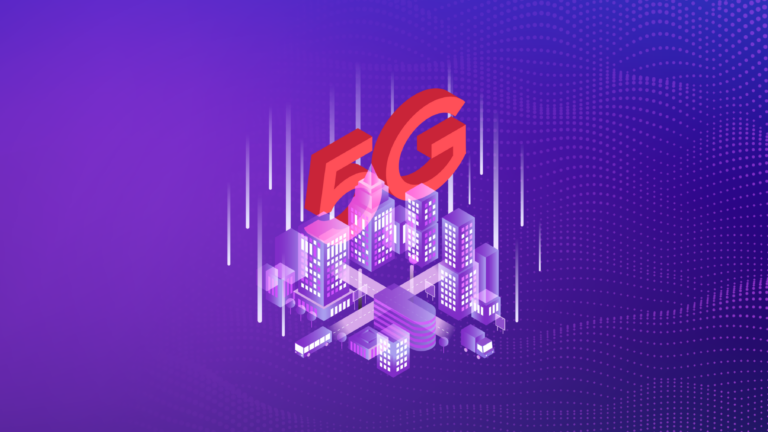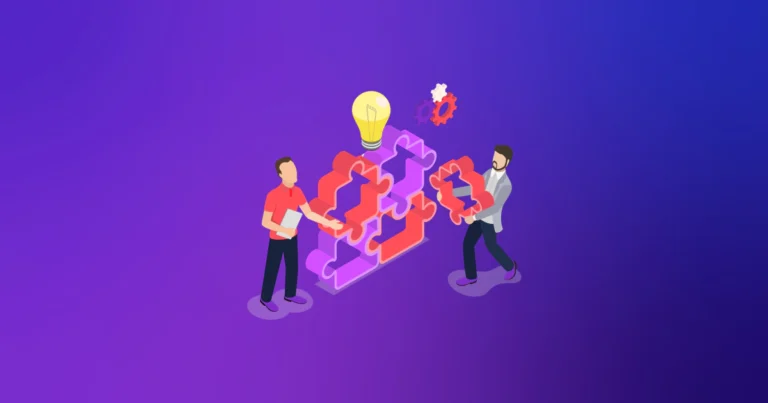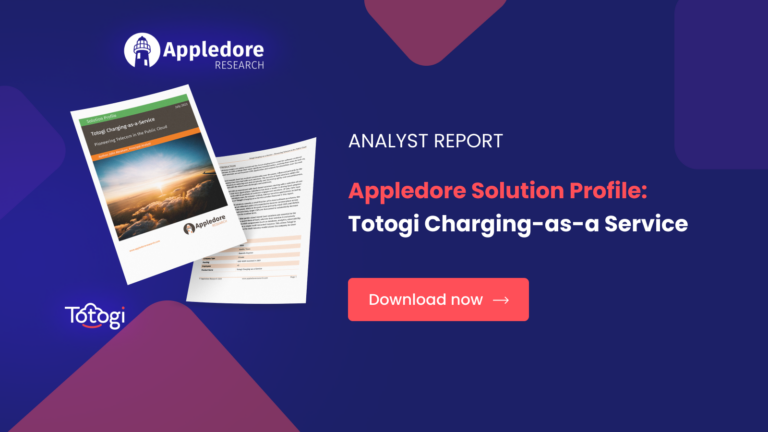5G Standalone (SA) is more than just an incremental update to mobile technology—it’s a fundamental shift in how telecom operators can design, deploy, and monetize network services. Historically, telcos have grappled with rigid network structures and inflexible pricing models that struggled to meet diverse customer needs efficiently. Our previous blog post, “5G Standalone unlocks new revenue—does your charger, though?”, highlighted the importance of having a modern charging system capable of keeping pace with the dynamic nature of 5G SA services. A crucial enabler of these innovative services is network slicing, a method allowing operators to partition their physical infrastructure into multiple virtual networks tailored to specific service demands. Services such as Ultra-Reliable Low Latency Communication (URLLC), massive IoT, and augmented reality rely heavily on the flexibility provided by network slicing. However, achieving profitable monetization of these slices requires more than just deploying the technology—it demands a cloud-native Converged Charging System (CCS) that can seamlessly align pricing strategies with real-time network performance and customer expectations. Let’s explore why the right charging solution is critical to turning your network slices into sustainable revenue streams.
The slicing revenue promise—beyond bits & bytes
Network slicing fundamentally redefines how mobile operators manage and monetize their networks. At its core, network slicing creates multiple logical networks—called “slices”—on top of a common physical infrastructure. Each network slice is tailored to meet distinct requirements and performance criteria, serving different kinds of applications and customers.
The concept is simple yet powerful. Each slice is identified by a Single Network Slice Selection Assistance Information (S-NSSAI), a unique identifier composed of two key components: a Slice/Service Type (SST) and an optional Slice Differentiator (SD). SST values are standardized by 3GPP Release 15, with specific codes assigned to the main 5G service types: Enhanced Mobile Broadband (eMBB), Ultra-Reliable Low Latency Communication (URLLC), and Massive Machine Type Communication (mMTC).
Network slicing also directly supports private 5G networks and Industry 4.0 initiatives by enabling specialized, optimized slices tailored to specific industry needs, such as ultra-low latency for factory automation or massive connectivity for extensive IoT deployments. Furthermore, network slicing enables effective multi-tenancy, allowing multiple enterprises or vertical industries to share network resources securely and efficiently.
Enhanced Mobile Broadband (eMBB)
Traditionally associated with delivering high bandwidth and high-speed connectivity, eMBB leverages slicing to ensure optimal resource allocation during peak times or specific events such as stadiums, concerts, and augmented reality (AR) applications. Network slicing enables operators to dynamically allocate bandwidth and processing power, ensuring seamless experiences even under extreme usage scenarios, enhancing both user satisfaction and monetization potential.
Ultra-Reliable Low Latency Communication (URLLC)
URLLC requires extremely low latency (typically sub-1ms over air interface) and high reliability. Applications such as remote surgery, autonomous driving, and advanced robotics depend on this stringent performance. Network slicing enables the reservation of dedicated resources, isolating URLLC traffic from other less latency-sensitive traffic types, thus ensuring guaranteed performance levels. Charging systems must be able to measure and monetize these stringent guarantees precisely, providing differentiated pricing structures based on latency, reliability, and availability.
Massive Machine Type Communication (mMTC)
mMTC focuses on connecting massive numbers of IoT devices, characterized by low power consumption, small data volumes, and intermittent connectivity. Network slicing optimizes signaling, device management, and coverage for IoT-specific scenarios, facilitating tailored charging models based on the number of devices connected, frequency of data transmissions, or specific service levels.
How Converged Charging Systems enable network slicing
Deploying an advanced, cloud-native CCS is key to turning the technical capabilities of network slicing into real economic value:
- Distinct and flexible rating rules: An effective CCS must support differentiated and highly granular rating mechanisms, from simple volume-based charging for eMBB slices to event-driven or SLA-based charging for URLLC slices. This flexibility allows operators to align pricing strategies with the specific service attributes and customer expectations inherent to each slice.
- Granular charging: To maximize revenue, charging systems need the capability to handle detailed, slice-specific metrics. Whether it’s latency for URLLC or the number of active devices in an mMTC scenario, a granular billing capability ensures precise, transparent, and justified charges.
- Multi-tenancy: A modern CCS supports multi-tenancy, allowing operators to host multiple virtual operators or enterprises efficiently. Each tenant or industry vertical can have dedicated slices with isolated financial management and billing, significantly reducing operational complexity and enabling customized billing strategies aligned with unique business models.
- Elastic scalability: Network slices frequently experience fluctuating demand. Elastic scalability allows the CCS to dynamically scale resources up or down based on real-time demand, optimizing infrastructure costs and ensuring uninterrupted, high-quality service delivery across various tenants and slices.
- Efficient resource utilization: Efficient utilization ensures the charging system maximizes revenue without waste. A cloud-native CCS intelligently leverages cloud resources, scaling automatically to handle peak usage scenarios while minimizing idle infrastructure costs, thus enhancing overall operational efficiency.
Why most CCS fall short on realizing the full potential of network slicing
Most existing CCS implementations were initially developed for 3G and 4G networks and struggle to adapt to the dynamic, granular, and performance-sensitive nature of 5G network slicing. Key shortcomings include:
Limited business-model flexibility: Traditional CCS solutions are often limited to basic metrics such as data volume or session duration, and can’t easily model or charge for advanced slice attributes—latency budgets, reserved radio/compute resources, connected-device density, or per-slice uptime.
Slice identification not fully leveraged: Many charging systems treat S-NSSAI simply as another tag, failing to use it effectively for differentiated rating, quota management, or SLA-based billing. This limitation prevents operators from creating nuanced, slice-specific offers.
Weak analytics and closed-loop monetization: Few CCS platforms currently integrate advanced analytics from the NWDAF (Network Data Analytics Function) to enable dynamic, KPI-driven pricing adjustments based on real-time network performance. As a result, operators miss opportunities for innovative, SLA-driven pricing models.
Insufficient multi-tenancy and B2B2X support: Legacy CCS often lack sophisticated multi-tenant billing capabilities required for wholesale and B2B2X scenarios. Legacy CCS platforms were designed for single-tenant, subscriber-centric charging. They struggle with 5G’s new wholesale patterns—per-slice wallets, hierarchical account trees, real-time revenue sharing and per-tenant settlement files. Lacking these capabilities, operators cannot launch or accurately settle the complex B2B2X offers that make 5G SA profitable.
Slow innovation cycles: Older charging systems typically follow rigid, slow upgrade cycles, restricting operators’ ability to quickly roll out and test new pricing strategies. This hampers agility and responsiveness in monetizing rapidly evolving 5G services.
Addressing these limitations is crucial for operators aiming to unlock the full revenue potential of network slicing, transforming technical capability into competitive advantage.
Totogi Charging-as-a-Service: Built for 5G slicing from the ground up
Unlike traditional charging solutions, Totogi Charging-as-a-Service is designed natively for the 5G era, directly addressing the shortcomings of legacy CCS platforms:
- Instant slice-aware monetization: Totogi’s cloud-native architecture allows immediate recognition and monetization of new slices, without lengthy manual configurations. Its rating engine inherently understands S-NSSAI, enabling operators to instantly deploy unique, tailored pricing for each slice type or tenant.
- Advanced analytics-driven charging: Totogi Charging-as-a-Service uses real-time analytics, allowing it to dynamically adjust tariffs based on actual slice KPIs such as latency, throughput, and device density. Operators can automatically monetize performance guarantees, introducing sophisticated, SLA-based pricing models that boost customer satisfaction and revenues.
- Robust multi-tenancy and hierarchical billing: Totogi supports complex multi-tenancy scenarios natively, enabling operators to effortlessly manage multiple tenants, MVNOs, or enterprise customers. It provides hierarchical account structures and consolidated billing, facilitating straightforward B2B2X monetization and wholesale settlements.
- Elastic scalability and cost efficiency: Leveraging a true cloud-native, serverless infrastructure, Totogi dynamically scales up and down in real-time, efficiently handling varying traffic demands across slices. Operators only pay for resources consumed, significantly reducing operating expenses compared to traditional fixed-capacity systems.
- Rapid innovation and flexible deployments: With CI/CD-powered continuous updates and a cloud-based SaaS model, Totogi empowers operators to rapidly introduce, test, and optimize new tariff models. Operators can now launch differentiated offers in days or hours, not months, accelerating innovation cycles and staying ahead of market demands.
Conclusion
Network slicing represents a massive opportunity to create differentiated, high-value services. Realizing this potential fully requires a charging system built specifically for the complexity and flexibility of 5G. Totogi Charging-as-a-Service provides operators with the sophisticated, scalable, and dynamic charging capabilities essential for maximizing the monetization of network slicing. By overcoming legacy limitations, Totogi ensures telcos can confidently turn every slice into a powerful revenue generator, capturing the full economic promise of the 5G era.
Want to see how Totogi Charging-as-a-Service helps you turn every slice into serious revenue? Book a demo and see it in action.





